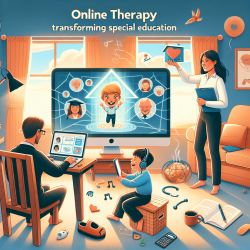Introduction: Bridging the Gap with Biomedical Communication
In the ever-evolving field of therapy, staying informed about global health issues and their implications is crucial for practitioners. The research article titled "Biomedical communication and the reaction to the Queensland childhood lead poisoning cases elsewhere in the world." by J.C. Burnham provides valuable insights into how biomedical communication can influence public health responses. This blog explores how therapists can leverage these findings to enhance their practice, particularly in the realm of online therapy services for schools.
Understanding the Impact of Biomedical Communication
The research highlights the role of biomedical communication in shaping public perception and policy responses to health crises, such as the Queensland childhood lead poisoning cases. For practitioners, understanding this dynamic is essential. Effective communication can lead to better-informed communities, which is especially important when dealing with sensitive health issues.
Practical Applications for Therapists
Here are some ways therapists can apply the outcomes of this research to improve their practice:
- Enhance Communication Skills: Develop clear and empathetic communication strategies to convey health information effectively to students, parents, and school staff.
- Stay Informed: Regularly update your knowledge on global health issues and their local implications to provide relevant advice and support.
- Collaborate with Health Professionals: Work closely with healthcare providers to ensure consistent messaging and comprehensive care for students.
- Advocate for Policy Change: Use your platform to advocate for policies that address health issues impacting your community, informed by global case studies like the Queensland lead poisoning cases.
Encouraging Further Research
While the research offers valuable insights, it also highlights the need for ongoing study into the effects of biomedical communication. Therapists are encouraged to engage in further research to better understand how communication strategies can be optimized for different populations and health issues.
Conclusion: The Path Forward
By integrating the lessons from this research into their practice, therapists can enhance their ability to communicate effectively and advocate for their clients. This not only improves individual outcomes but also contributes to a more informed and healthier community.
To read the original research paper, please follow this link: Biomedical communication and the reaction to the Queensland childhood lead poisoning cases elsewhere in the world.










